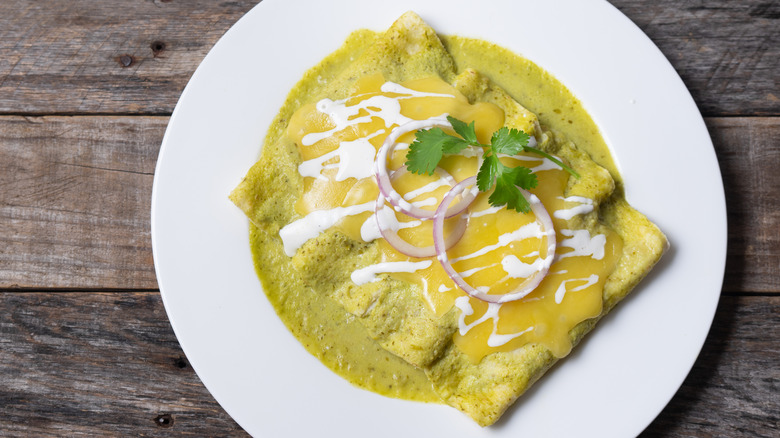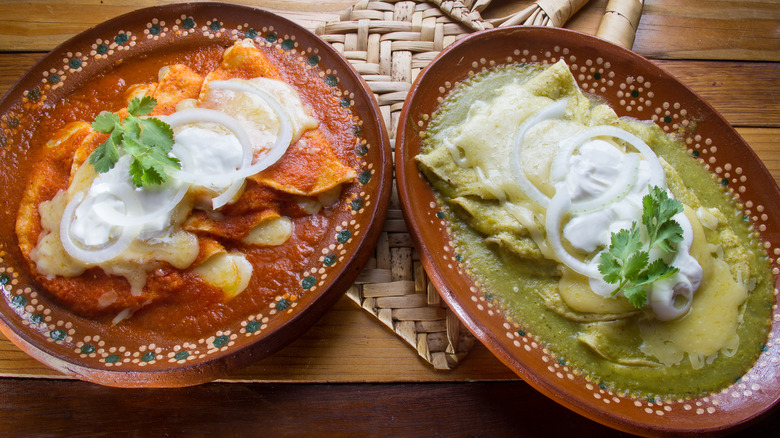How To Control The Spiciness Of Homemade Green Enchilada Sauce
Tangy, rich from the herbs and the tomatillos, and bright with heat from chili peppers, you can give any Mexican recipe a lift in flavor and aroma with just a touch of green enchilada sauce. You can easily find this sauce at the store in cans. However, homemade is always best. Once you've learned how to make green enchilada sauce at home, you won't ever be happy with the canned stuff again. The flavor is simply superior, with better freshness. But more importantly, you can also control the heat level according to your preference when you make it from scratch.
If you want to control the spiciness, it goes without saying that you'll have to focus on the spice-producing component of the sauce: the chili peppers. Most green enchilada sauce recipes will tell you to add a seeded serrano pepper. This chili packs a fiery punch between 10,000 to 23,000 Scoville Heat Units (SHU). So, instead of serrano, you can opt for a small jalapeño. Rated only between 2,000 to 8,000 SHU, this will reduce the spice down to only a gentle tingle.
In contrast, if a seeded serrano isn't doing the trick for you, double down with two for a sauce that truly sizzles. You can even choose to keep the seeds in. The sauce will become even more pungent since the seeds are where most of the spice comes from.
What's the difference between green and red enchilada sauce?
Enchilada sauces come in two forms: either green or red. The difference in color simply comes from the different ingredients that they use (mostly the type of chili.) Red enchilada sauce uses red chiles like guajillo, ancho, or arbol as their spice components. Their hot red skin lend the final sauce a rich, red color and bold smoky flavor. They'll also use red tomatoes to give the sauce a sweet tang. In contrast, green enchilada sauce derives its character from green chiles, like serrano, jalapeño, poblano, or habanero, and instead of tomatoes, they use green-skinned tomatillos.
Between red and green sauces, none is inherently better. It mostly comes down to the recipe as well as your own preference. Green enchilada sauce, with its lively tomatillo tang, perfectly complements chicken or beef, though other options like chorizo, shrimp, or beans work just as well. Meanwhile, you can harness the smokiness of red enchilada sauce to amp up the flavors of meaty recipes that include beef.

